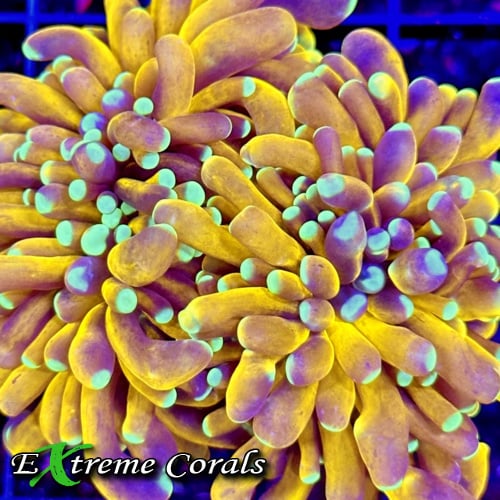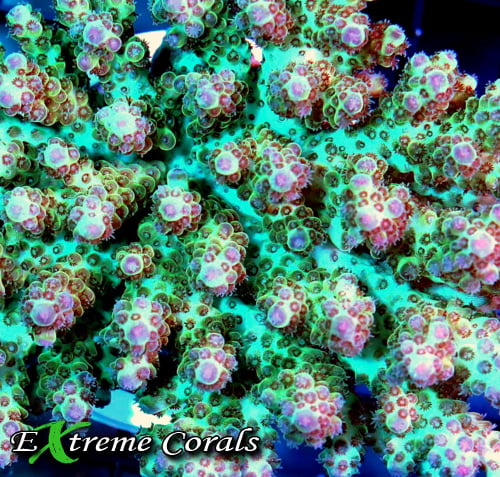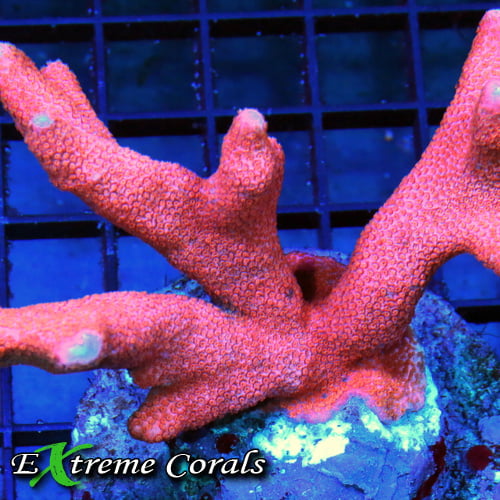Extreme Corals News and Updates
Mastering the Care Differences between LPS and SPS Corals for Your Reef Tank
Navigating the Unique Care Needs of LPS and SPS Corals for a Thriving Reef Tank
Extreme Corals offers comprehensive guidance on the distinct care requirements of LPS and SPS corals, helping reef tank enthusiasts create a thriving ecosystem. This blog explores nutrient tolerance, lighting, water flow, and popular species for both coral types, making it essential reading for beginners and advanced hobbyists alike. Discover how to select, acclimate, and maintain these stunning corals for a vibrant reef display.
by scott Shiles • June 26, 2024
Here at Extreme Corals, we aim to provide you with the most unique corals in the hobby. LPS and SPS corals have different needs and functions within your reef tank, so it is important for beginners to review the differences before making a decision. We have the largest online selection of corals in the US, so you are guaranteed to find something awesome for your growing hobby. Check out our LPS corals and SPS corals pages today to find something spectacular for your tank! Extreme Corals offers a diverse selection of both LPS (Large Polyp Stony) and SPS (Small Polyp Stony) corals, recognizing the importance of understanding their unique care needs. Whether you're a beginner or an experienced hobbyist, grasping these differences is crucial for maintaining a thriving reef ecosystem. In this comprehensive guide, we'll explore the nuances of caring for LPS and SPS corals, providing insights to help you make informed decisions for your tank.
LPS Corals:
LPS corals, characterized by their larger, fleshy polyps and calcium carbonate skeleton, require specific care considerations:
- Nutrient Tolerance: LPS corals are less sensitive to elevated levels of nitrates and phosphates compared to SPS corals, thanks to their larger polyps' ability to absorb more nutrition from the environment.
- Lighting and Flow: Thriving in low to moderate lighting and preferring lower water flow conditions, LPS corals are suitable for beginners. Providing appropriate lighting and gentle water movement is crucial for their well-being.
- Supplementation: While tolerant of nutrient levels, LPS corals may benefit from calcium and alkalinity supplements to support growth. Regular testing and supplementation help maintain optimal water chemistry.
- Feeding: Some LPS corals, such as certain varieties of Torch and Hammer corals, can benefit from target feeding with small meaty foods like mysis shrimp or zooplankton. This supplemental feeding can enhance their growth and coloration.
Torch Coral (Euphyllia glabrescens):
Recognized for its long, flowing tentacles resembling a torch, Torch corals come in various colors and thrive in low to moderate lighting with moderate water flow.

Frogspawn Coral
(Euphyllia divisa): Featuring large, fleshy polyps resembling a frog's foot, Frogspawn corals display vibrant colors and prefer moderate lighting with moderate water flow.

Hammer Coral
(Euphyllia ancora): With hammer-shaped tentacles, Hammer corals are available in multiple color variations and thrive in low to moderate lighting with moderate water flow.

SPS Corals:
SPS corals, with their smaller polyps and intricate growth patterns, present greater care challenges. Consider the following when caring for SPS corals:
- Demanding Conditions: SPS corals require high lighting, water flow, calcium, magnesium, and alkalinity levels. Stable water parameters are essential for their health and growth.
- Growth Rate: Known for rapid growth, SPS corals branch out to absorb vital nutrients. However, their delicate nature demands precise care for optimal thriving.
- Acclimation: SPS corals can be sensitive to changes in water chemistry, temperature, and lighting. Slow acclimation to tank conditions is crucial to prevent stress and ensure successful integration into the reef environment.
- Fragging: Fragging SPS corals requires precision and caution due to their delicate structures. Proper tools and techniques are necessary to ensure successful propagation without causing harm to the parent colony.
Popular Species
Acropora Coral:
This genus includes a wide variety of species, each with its unique growth form and coloration. Acropora corals require high lighting and water flow, making them ideal for advanced reef keepers.

Montipora Coral:
Available in various colors and growth forms, Montipora corals are more tolerant of fluctuating conditions and can thrive in a range of lighting and water flow setups.

Bird's Nest Coral (Seriatopora hystrix):
Named for its branch-like growth pattern resembling a bird's nest, this coral is hardy and adaptable, making it suitable for intermediate reef keepers.

New Insights:
For beginners exploring SPS corals, selecting beginner-friendly species can ease the transition. These corals boast stunning colors, rapid growth rates, and resilience to fluctuating tank conditions. However, fragging SPS corals requires precision and caution, posing a daunting task for many hobbyists.

